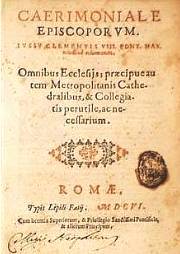italian: from the beginning
from roman's latin to today's dialects
By Roberto Simmarano

Classical Latin
The Roman Empire, the most far-flung of the ancient world,
was populated by around 80 million people, roughly half of
whom spoke Latin: no other antique language was as
widespread or important. The language spoken in Rome was
the model for the other regions of the Empire and by the
time of Julius and Augustus Caesar (60 B.C. - 15 A.D.),
through writers like Cicero, Sallust, Virgil and Horace, it
had developed fixed rules (of grammar, syntax and meaning)
which were held to be perfect. After the fall of the Roman
Empire, this "classic" Latin remained a fundamental means of
communication between nations and scholars, as well as
becoming the language of the Church.
The rise of Romance Languages and the formation of Italian dialects
When the Roman Empire fell (476 A.D.), it was replaced by
new Roman-Barbarian kingdoms and Classical and spoken Latin
were permanently divided. The former remained unchanged,
used only in texts or by an educated elite whilst the
spoken form was used by millions of people in their daily
lives and thus came into contact with the languages of the
Germanic invaders and was developed into different tongues.
In this way were born the Romance languages. In Italy, the
use of Latin as the single language gradually faded to be
replaced by numerous dialects: the "vernacular" which
varied from region to region.
The first appearances of the Vernacular in literature
The vernacular first appears in literature in the poetry of
the 13th century with the Sicilian, Tuscan and Stil novo (new style)
poets who employed a refined lexicon. The shift to the use
of the vernacular made possible a set of specific rules and
forms thereby removed from the vicissitudes of the spoken
language. At the same time it became possible to refine
linguistic expression by toning down the rougher local
dialects. Later, the great Tuscan writers of the 13th and
14th centuries, Dante, Petrarch and Boccaccio, made a
fundamental contribution by writing a literary language that
would be the model for succeeding centuries.
The confirmation of the Florentine dialect
|
see also...
Language Forum
Language Maintenance Magazine

If
you've already learned the basics of Italian, are fascinated by Italian culture, and want
to take your language skills to a higher level, this is for you!
(more language tools)
Italian for Dummies
Helps people master the basics-from vocabulary and pronunciation to commonly used idioms
and phrases.
Practical dialogues tackle common situations, from dining to shopping and traveling
Mini dictionaries and pronunciation guides offer on-the-spot help.
(more language books)
|
The linguistic unification of Italy came about gradually
through the spread of a language that developed from the
Tuscan dialect, more precisely Florentine. It became a
superior language, used in politics, administration and
inter-regional communications; fields hitherto reserved for
Latin which survived, particularly in the 16th and 17th
centuries, as the language of culture and the Church. After
an initial period in which the various dialects vied for
supremacy, Florence's prodigious economic growth, social
development and commercial and cultural expansion, led to
the adoption over the centuries of its dialect as the
common Italian tongue.
The "language problem" between the 16th and the 20th centuries
The Florentine vernacular that was to become the Italian
tongue was for a long time used outside Tuscany only as a
literary language, encouraged by men of letters such as
Pietro Bembo and the Academicians of Crusca, and the
majority of people used their regional dialect. Italian
also underwent a slow lexical and syntactical improvement,
due in part to the principal writers of the 19th century:
Foscolo, Leopardi, and above all, Manzoni. Only from the
18th century and particularly after Unification (1861) was a
knowledge of Italian established and the time-honored
dialect division of the country healed.
Linguistic minorities in Northern Italy
The majority of Italians now speak Italian and regional dialects are used less and
less. Nonetheless, there are two bilingual regions (Aosta Valley and Trentino Alto
Adige) as well as some linguistic minorities. Ladin, one of the dialects derived from
Latin, is spoken in the Dolomite valleys and principally, in the Friuli region
(around 900,000 inhabitants) where there is a lively use of the regional tongue
alongside Italian. In Piedmont, particularly in the provinces of Cuneo and Turin,
many people continue to speak Occitan, a Provencal-type dialect similar to that
spoken in southern France. Sloven linguistic groups can be found in some valleys in
the province of Udine and more so in the provinces of Gorizia and Trieste.
Linguistic minorities in Southern Italy and the Islands
During the late Middle Ages Slavs settled in the Marches, on the Salento peninsula
and in Molise where even today there is a minority of Croatian speakers. Other
migrations, like that of the Albanians who fled the Turkish invasion of the 15th
century, led to the establishment of "Tosca": a variety of Albanian that continues
to be the native tongue for many of the inhabitants of Molise and Calabria. There
are Greek-speaking groups in the provinces of Lecce (Apulia) and Reggio Calabria
which date back to the ancient Greek colonies. Finally, a good half of the population
of Alghero in Sardinia speaks Catalan -- a legacy of the Aragonese invasion in 14th
century.
Bilingualism in the Regions with a Special Statute
There are two bilingual regions in Italy: that is, where the use of Italian is on a
par with either French, as in the Aosta Valley, or German, as in Trentino Alto Adige.
In the Aosta Valley and in some valleys to the north-west of Turin, the traditional
language of the local population is French-Provencal. The special statute of 1948
allowed for the parity of French and Italian in public documents, in schools and in
civil life. The German-speaking minority in Italy inhabits a large area of Trentino
Alto Adige where both Italian and German are recognized as the official language.




